The Movement for Sustainability
- Home
- Agriculture and Sustainability
- Exhibits
- The Movement for Sustainability
by Shannon Dade, revised by Thuy Dinh and Glenna Van Dyke
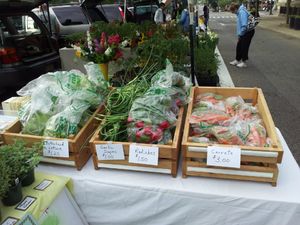
In recent years, concern about the economic, environmental, and nutritional impact of factory farms has led many in the U.S. to advocate for locally grown food. The home-grown movement has been especially relevant in Wayne County, which has many small farmers and organic producers. Many Wooster residents have come together to support these farms and provide local, sustainably produced food to the community.
The Revival of Small Farming
The last century saw several changes in agriculture, including an expansion westward and new technology. As eastern farmland became overused, farmers trekked out west in search of new land. However, by 1920, almost all the land in the West had been taken as well. So, farmers had to turn to technology and work with whatever land they had. In the 20th century, farmers starting using chemicals and heavy machines to work the land, transforming farms from small-scale family farms to huge commercial ones. This change though would have serious consequences.
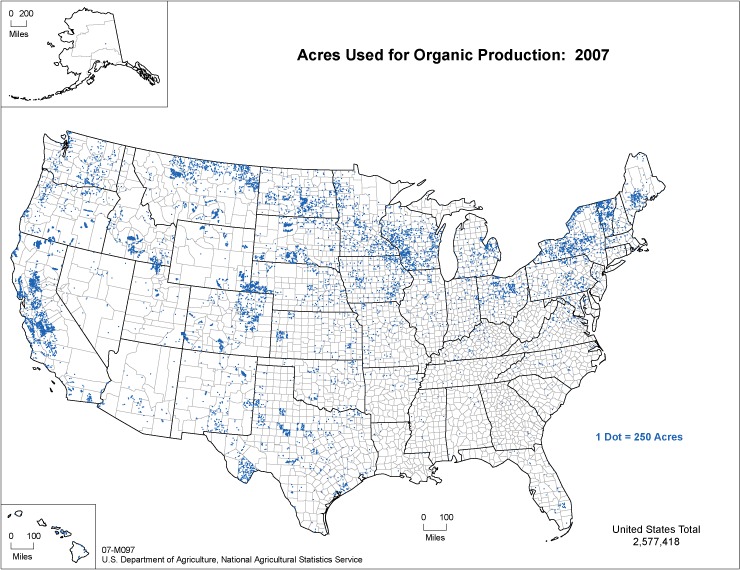
Concerns began to arise about the impacts of farming becoming a big business. In recent decades, concerns about commercial farms and their impact on the environment have arisen as well, such as the overuse of synthetic fertilizers and the use of fossil fuels. Environmentalists began to advocate for local, sustainable agriculture and local famers got on board as they also saw commercial farming as a threat to their livelihoods.3 Together, these groups look to a more traditional, 19th century style of farming, and use the past to help guide them to the future.
Wayne County’s “Green” Pioneers
Wayne County was one of the early leaders in the sustainable agriculture movement. While the movement gained traction in the 1970s, Congress didn’t establish national standards for organic farming until 1990. 1 However, some farmers such as Harold Hartzler of Hartzler Family Dairy were ahead of the national curve. He stopped using chemical pesticides, herbicides, and artificial growth hormones in 1964, when out of 2398 farms in Wayne County3, 1850 were using agricultural chemicals.4
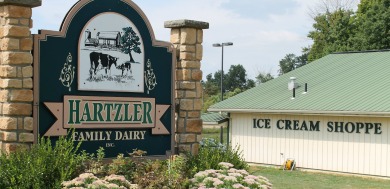
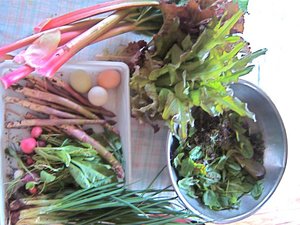
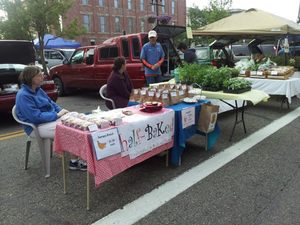
Later, Wayne County continued to lead the sustainable farm movement. The Autumn Harvest Farm was one of the first farms in the area to be certified organic in 1996,5 followed by the Muddy Fork Farm in 1997.6 Since then, the number of certified organic farms and businesses in Wayne County as grown to more than 130 in 2017.7 Today, Wayne County has the largest acreage of organic production in Ohio.8 The push for local, sustainable farming grows stronger as environmental issues become more pressing, and in Wooster, local farmers continue to receive support from the community.
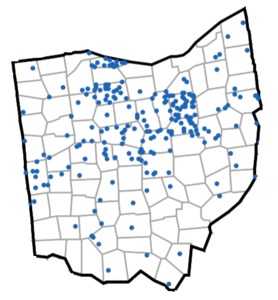
The Local Food Movement in Wooster
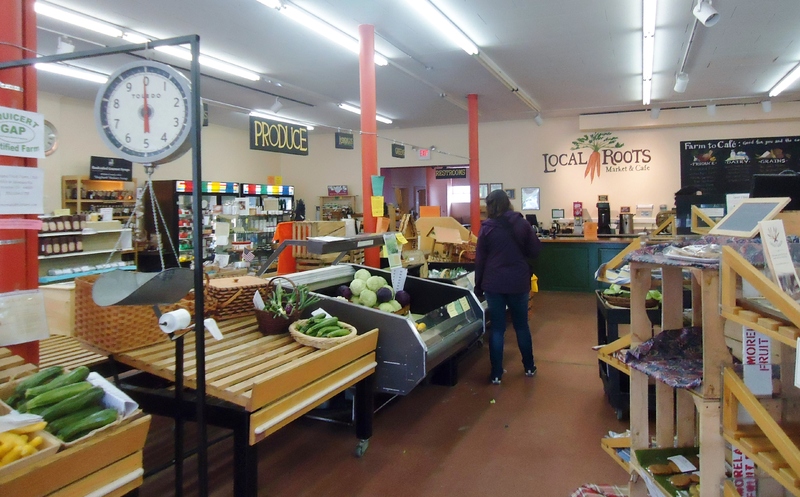
The community supports local farmers through a variety of businesses that make local food available for the town. Fresh, local produce can be found in the College of Wooster’s dining halls, and in the summer, residents can buy local produce at the Farmer’s Market.1 Local business such as Spoon and Sure House Coffee also use local, sustainable ingredients. 2 Wooster is a great example of a community that works together for a sustainable future, as it becomes more of a national priority.
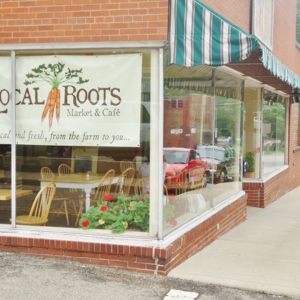
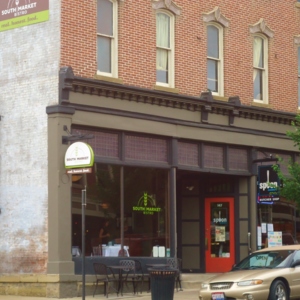
Another prime example of sustainability in Wooster is the Local Roots Market & Café, which was founded by the Wooster Local Foods Cooperative in 2009. Today, Local Roots provides more than 600 customers with local, mainly organic, produce from over 150 farmers. At Local Roots, unlike a regular grocery store, farmers set their price and can keep 90% of the profit. 3 Betsy Anderson, president of Local Roots’ Board of Directors, explained, “Our goals are to encourage healthy eating, expand local economic development, promote community involvement and sustainable living.”4 The market’s success has brought it national attention, and it has been featured in the Cleveland Plain Dealer and the Washington Post. 5 Local Roots has also served as a model for other communities, with similar stores opening in Ashland, Ohio and other rural towns. 6
Sources by Section:
1 Fred A. Shannon, The Farmer’s Last Frontier (New York: Farrar & Rinehart, Inc., 1945), 4-25.
2 Gilbert C. Fite, American Farmers: The New Minority (Bloomington: Indiana University Press, 1981), 120-136.
3 Paul K. Conkin, A Revolution Down on the Farm: The Transformation of American Agriculture since 1929 (Lexington: The University Press of Kentucky, 2008), 183-192.
1 Kirschenmann, Frederick. “A brief history of sustainable agriculture.” The networker 9, no. 2 (2004): 9-2.
2 “Harold Hartzler – Hartzler Family Dairy,” Hartzler Family Dairy, 2011, accessed June 5, 2017, http://hartzlerfamilydairy.com/about-hartzlers/harold-hartzler.
3 USDA Census of Agriculture, “Table 6. Farms by Tenure, Off-Farm Wor, and Age of Operator, and by Type, Economic Class, and Value of Products Sold: 1964 and 1969,” accessed June 9, 2017, http://usda.mannlib.cornell.edu/usda/AgCensusImages/1964/01/10/725/Table-06.pdf.
4 USDA Census of Agriculture, “Table 8. Farm Equipment and Facilities, Hired Workers, and Use of Agricultural Chemicals: 1964 and 1959,” accessed June 9, 2017.
5 “Autumn Harvest Farm,” Autumn Harvest Farm, accessed June 5, 2017, http://autumn-harvest-farm.com/index.html.
6 “Muddy Fork Farm,” Muddy Fork Farm, accessed June 5, 2017, http://muddyforkfarmcom.ipage.com/.
7 “Organic INTEGRITY Database,” United States Department of Agriculture: Agricultural Marketing Service, accessed June 5, 2017, https://organic.ams.usda.gov/Integrity/.
8 USDA Census of Agriculture, “Table 42. Organic Agriculture: 2012,” accessed July 6, 2017, https://www.agcensus.usda.gov/Publications/2012/Full_Report/Volume_1,_Chapter_2_County_Level/Ohio/st39_2_042_042.pdf.
1 “Sustainable Dining,” The College of Wooster, 2013, accessed July 3, 2013, http://www.wooster.edu/students/dining/sustainable
2 “Sustainable Cuisine,” South Market Bistro, 2011, accessed July 3, 2013, http://www.southmarketbistro.com/sustainable-cuisine.php
3 “Growing Local Roots – Our History,” Local Roots, 2013, accessed July 3, 2013, http://localrootswooster.com/history
4 Lydia Gehring, “President’s Cookbook: Local Roots a Community Gathering Spot,” Daily Record, Dec. 14, 2007, accessed July 3, 2013, http://www.the-daily-record. com/living/2011/12/14/president-s-cookbook-local-roots-a-community-gathering-spot
5 Jane Black, “Smarter Food: A Farmers Market with a Difference,” Washington Post, Jan 3, 2012, accessed July 3, 2013, http://articles.washingtonpost.com/2012-01-03 /lifestyle/35441786_1_farmers-markets-local-foods-small-farmers
6 Bob Filburn, “Local Roots – A New Farmers Market Model,” The Daily Southerner, July 11, 2011, accessed July 3, 2013,http://localrootsashland.com/index.htmhttp://dailysoutherner.com/thegarden/x66809842/Local-Roots-A-New-Farmers-Market-Model
How to cite this page:
MLA: “The Movement for Sustainability.” stories.woosterhistory.org, http://stories.woosterhistory.org/the-movement-for-sustainability/. Accessed [Today’s Date].
Chicago: “The Movement for Sustainability.” stories.woosterhistory.org. http://stories.woosterhistory.org/the-movement-for-sustainability/ (accessed [Today’s Date]).
APA: (Year, Month Date). The Movement for Sustainability. stories.woosterhistory.org. http://stories.woosterhistory.org/the-movement-for-sustainability/

